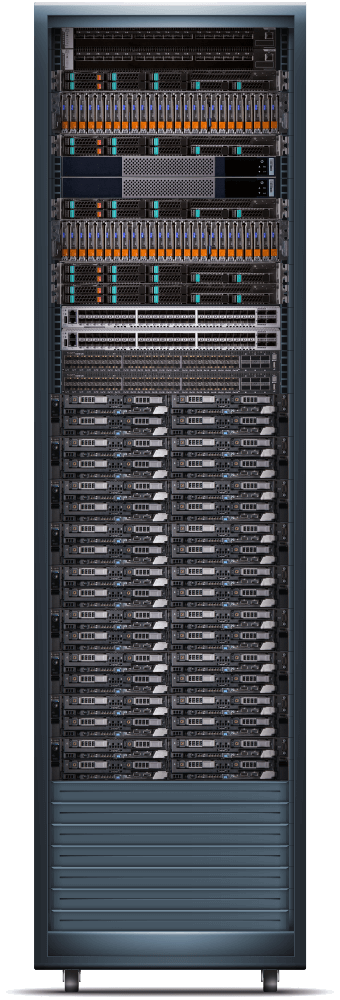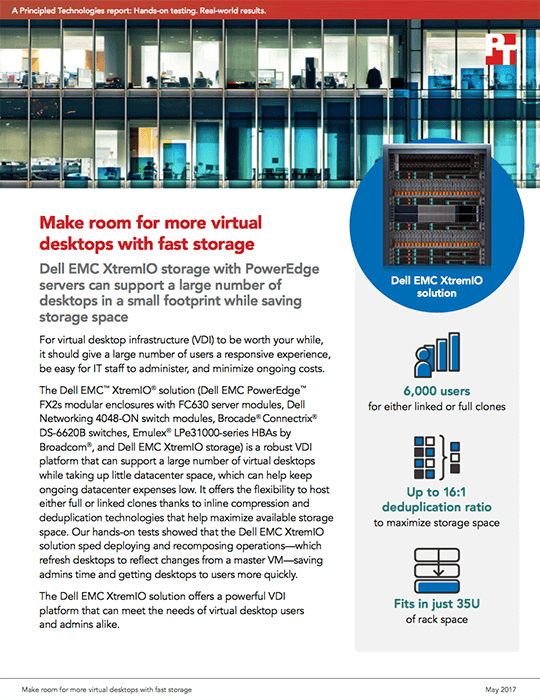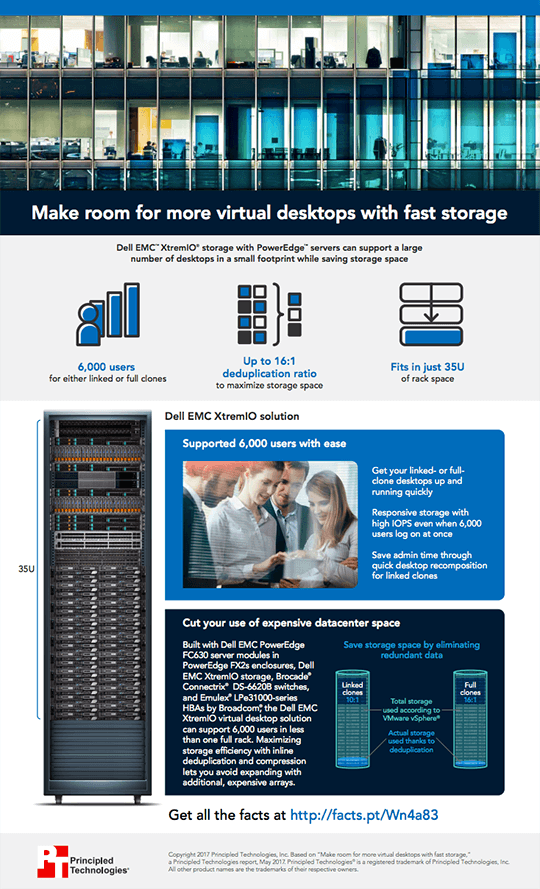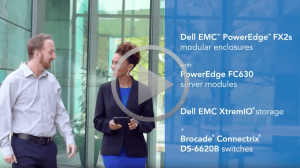 Virtual desktop infrastructure (VDI) can be ideal for organizations, such as call centers or universities, whose employees need access to desktops for work but don’t require their own dedicated systems. But poorly-executed VDI can cause more problems than solutions. To effectively save money and time for a company, a VDI implementation has to be easy to administer and manage for IT staff and quick to respond for users so they can maintain productivity.
Virtual desktop infrastructure (VDI) can be ideal for organizations, such as call centers or universities, whose employees need access to desktops for work but don’t require their own dedicated systems. But poorly-executed VDI can cause more problems than solutions. To effectively save money and time for a company, a VDI implementation has to be easy to administer and manage for IT staff and quick to respond for users so they can maintain productivity.
In the datacenter at Principled Technologies, we used a Dell EMC XtremIO solution running VMware vSphere and ESXi to deploy 6,000 virtual desktops. In just 35U of rack space, this solution handled a heavy workload with high bandwidth and low latency and allowed us to finish everyday VDI tasks fast.
We found that this Dell EMC and VMware solution could lend your organization a number of advantages:
![]() Get desktops up and running quickly. We tested two 6,000-user VDI deployments: one of linked clone desktops, which conserve disk space but can limit users’ autonomy, and one of full clone desktops, which require more storage space but give users more control. Both deployments finished quickly while delivering performance metrics that indicated a positive user experience.
Get desktops up and running quickly. We tested two 6,000-user VDI deployments: one of linked clone desktops, which conserve disk space but can limit users’ autonomy, and one of full clone desktops, which require more storage space but give users more control. Both deployments finished quickly while delivering performance metrics that indicated a positive user experience.
Maintain responsiveness during a boot storm. When a large number of users boot their desktops around the same time, such as at the start of a standard work day, it’s called a boot storm. The Dell EMC XtremIO and VMware solution easily handled all 6,000 simulated users logging on simultaneously. Latencies remained low for both linked clone and full clone desktops, and the simulated users got to their desktops fast.
Spend less time on desktop recomposition. With a linked clone VDI deployment, admins can make changes to all desktops at the same time in a process called desktop recomposition. For example, when a new software version is available, IT can update the parent VM and replicate that change to all the linked clones. We found that the Dell EMC and VMware solution can let admins recompose desktops quickly and easily—with low latencies for users—so they can focus more time on other work.
![]() Save storage space and datacenter space. Storage space is expensive, whether you’re talking about physical datacenter space or data storage within a hardware and software solution. The Dell EMC and VMware solution can support 6,000 users without taking up even one full rack in the datacenter, so you have more datacenter space for other initiatives. This solution also uses inline deduplication and inline compression to eliminate redundant data, dramatically cut down on the amount of data you need to store on your array, and reduce the heavy bandwidth usage typically associated with backups. In our testing, XtremIO arrays delivered deduplication ratios of 10:1 for linked clones and 16:1 for full clones.
Save storage space and datacenter space. Storage space is expensive, whether you’re talking about physical datacenter space or data storage within a hardware and software solution. The Dell EMC and VMware solution can support 6,000 users without taking up even one full rack in the datacenter, so you have more datacenter space for other initiatives. This solution also uses inline deduplication and inline compression to eliminate redundant data, dramatically cut down on the amount of data you need to store on your array, and reduce the heavy bandwidth usage typically associated with backups. In our testing, XtremIO arrays delivered deduplication ratios of 10:1 for linked clones and 16:1 for full clones.
Our experiences with this Dell EMC XtremIO and VMware solution indicate that it’s a compelling choice for organizations implementing a multi-thousand-user virtual desktop infrastructure. In less than a single rack of datacenter space, the Dell EMC and VMware solution supported 6,000 virtual desktops with a good user experience, even during a boot storm; allowed IT to recompose desktops quickly and easily; and cut down on data storage needs via inline deduplication and compression.
Learn more by reading the full report at facts.pt/Wn4a83, reviewing the infographic at facts.pt/Xm8Rea, or watching the video at facts.pt/6QLA9x.
This blog was commissioned by Dell Technologies.









